Calculation example - Calculate the height of an object when its top and bottom are visible but inaccessible #2
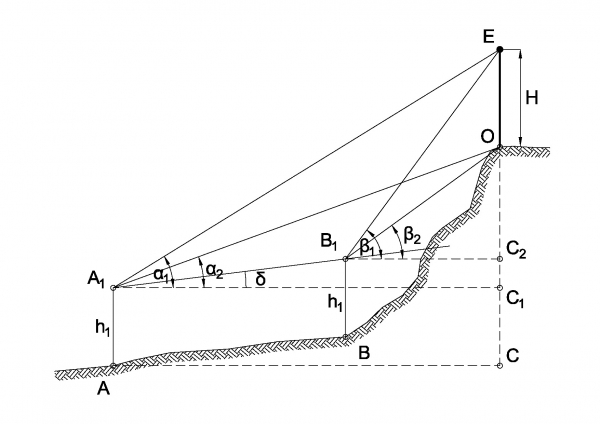
Contents [show]
Calculate the height of an object from a baseline when its top and bottom is visible but not accessible from observation points. Case scenario when baseline AB on sloping ground and in line with object.
Known values:
Baseline distance AB length, height h1 of the observer at points A and B.
Vertical angles measured at A – α1, a2 and δ.
Vertical angles measured at B – β1 and β2.
Solution: Height of object Η.
First, measure horizontal distance AB and vertical angles α1, α2, δ and β1, β2 from observer points A1 and B1 respectively.
In triangle A1ΕB1,

Same for triangle A1OB1,

Then calculate sloping distance A1Ε:

and

Same for sloping distance A1O:

and

Then:

Thus:

Selected Topics
Want to read more like this?
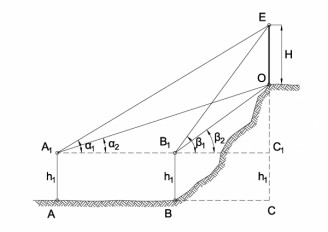
Calculation example - Calculate the height of an object when its top and bottom are visible but inaccessible
Jun, 26, 2019 | EducationCalculate the height of an object from a baseline when its top and bottom is visible but not accessi...
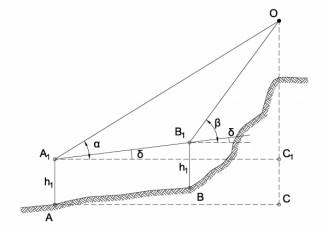
Calculation example - Calculate the height of an object when its base is inaccessible #3
Jun, 26, 2019 | EducationCalculate the height of an object from a baseline when its projected position to the ground is inacc...
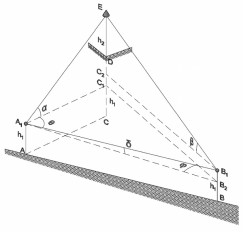
Calculation example - Calculate the height of an object when its base is inaccessible #4
Jun, 26, 2019 | EducationCalculate the height of an object from a baseline when its projected position to the ground is inacc...

Calculation example - Calculate the height of an object when its base is inaccessible
Apr, 19, 2019 | EducationCalculate the height of an object from a baseline when its projected position to the ground is inacc...
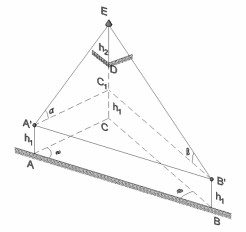
Calculation example - Calculate the height of an object when its base is inaccessible #2
Apr, 19, 2019 | EducationCalculate the height of an object from a baseline when its projected position to the ground is inacc...

Calculation example – Calculate the height of a building - 2
Mar, 19, 2019 | EducationCalculate the height of a building where the ground is sloping up or down from the observer. Know...

Calculation example – Calculate the height of a building
Sep, 22, 2017 | EducationCalculate the height of a building by observing its top from two ground points and measuring corresp...
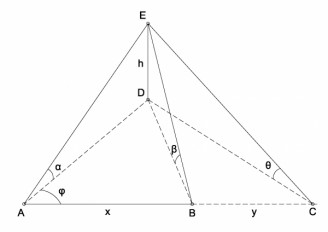
Calculation example - Calculate the height of an object from three angles of elevation
Jan, 20, 2020 | EducationCalculate the height of an object by measuring three angles of elevation only, from stations A, B an...

Calculation example - Calculate inclined angle of a bend
Jan, 20, 2020 | EducationCalculate the inclined angle φ of a bend along a bended path. Known values: Horizontal angle...
Trending

Calculation example - Three Point Resection

Calculation example - Determine the water content within a soil sample

Gauss's Area Calculation Formula

The history of the Golden Gate Bridge
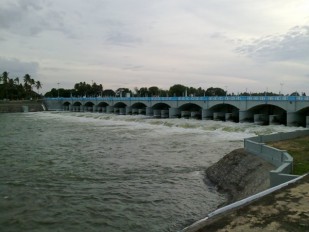
Kallanai Dam (Grand Anicut)
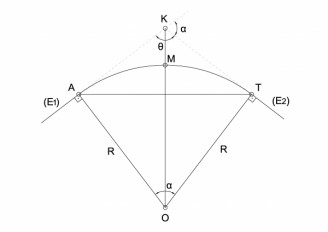
Calculation example – Road design– Circular arc implementation

Minoan Water Harvesting and Distribution (Terracotta Pipes)

